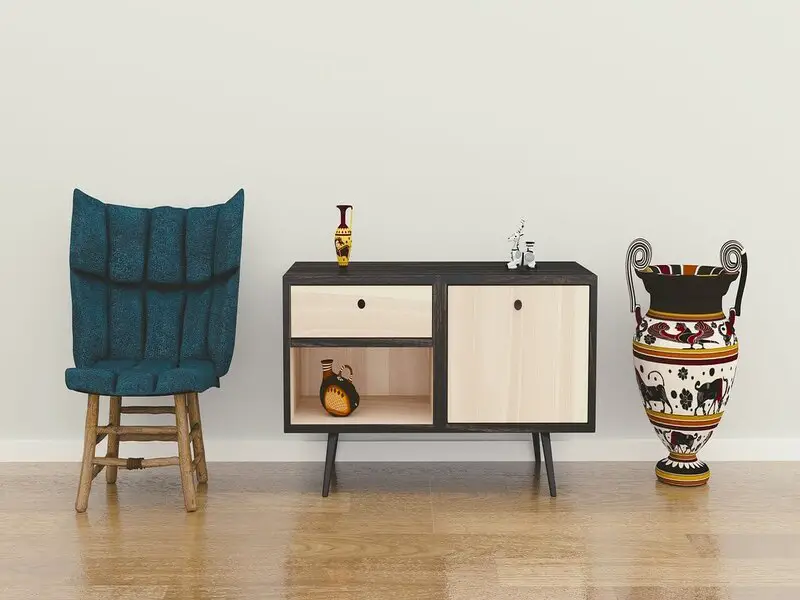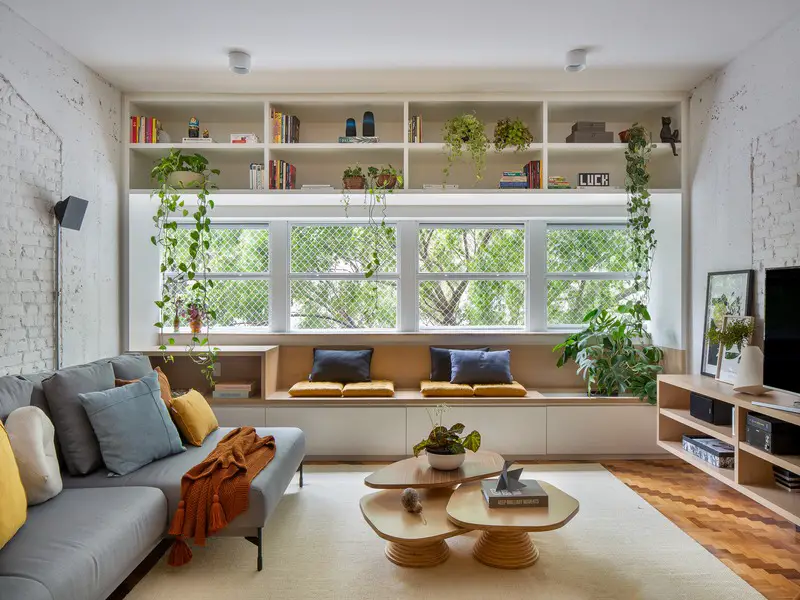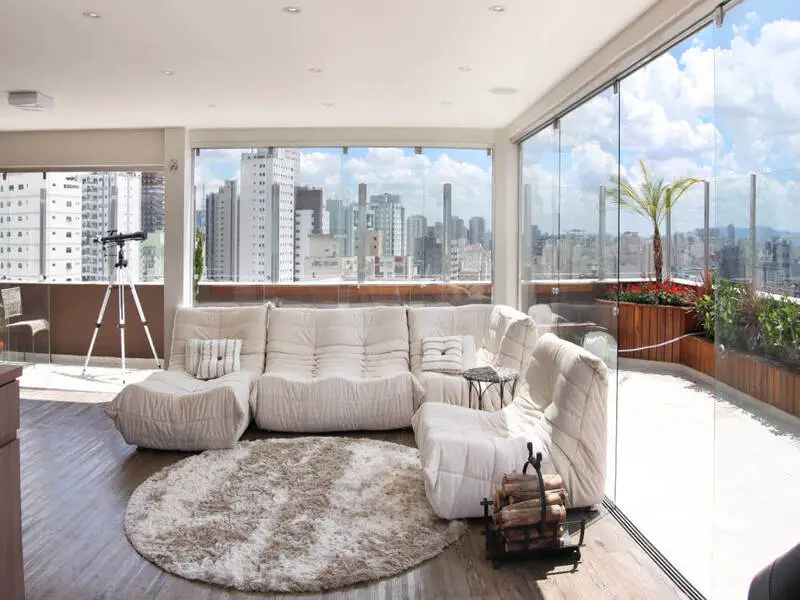Are you looking to create a tranquil, clutter-free home that exudes elegance and simplicity? If so, minimalist decoration may be just what you need. In this article, we will discuss the principles of minimalist decoration and provide tips and tricks to help you achieve a clean, minimalistic look in your home.
What is Minimalist Decoration?
Minimalist decoration is an interior design approach that focuses on creating a simple, uncluttered environment by limiting the number of decorative items in a space. It emphasizes functionality over aesthetics and often employs a neutral color palette to create a calming atmosphere. Minimalist decoration is characterized by clean lines and a focus on negative space, which helps to make a room feel open and spacious. In a minimalist home, furniture and decor items serve a purpose and are chosen for their functionality, rather than their decorative value. This design style aims to create a tranquil, relaxing environment that promotes a sense of well-being and mindfulness.

Benefits of Minimalist Decoration
Minimalist decoration has numerous benefits that can improve the overall quality of life in a home. Here are some of the main benefits of minimalist decoration:
- Reduced stress and anxiety: A cluttered and chaotic environment can be overwhelming and stressful, which can negatively impact mental health. Minimalist decoration can help create a peaceful and serene environment that promotes relaxation and reduces stress and anxiety.
- Increased focus and productivity: A clutter-free space can help improve concentration and productivity. By eliminating distractions and unnecessary items, minimalist decoration can help create an environment that promotes focus and creativity.
- More efficient use of space: By reducing clutter and unnecessary furniture, minimalist decoration can make the most of the available space in a room. This can be especially beneficial in smaller living spaces or homes with limited square footage.
- Cost-effective: Minimalist decoration often involves using fewer decorative items, which can save money on decor and maintenance costs. Additionally, by focusing on functional and high-quality furniture, you may end up saving money in the long run by investing in items that are durable and long-lasting.
- Environmental benefits: By reducing the number of unnecessary items and focusing on natural materials, minimalist decoration can also have environmental benefits. By choosing eco-friendly options, you can help reduce your carbon footprint and contribute to a more sustainable future.
Overall, minimalist decoration can have a positive impact on physical and mental health, productivity, and the environment. By creating a clutter-free and functional living space, you can enjoy a more peaceful and fulfilling lifestyle.
Tips for Achieving a Minimalist Decoration Style
Here are some tips and tricks to help you achieve a minimalist decoration style in your home:
Start with a Neutral Color Palette
When it comes to minimalist decoration, starting with a neutral color palette is key. A neutral color palette typically consists of shades of white, beige, gray, or black, and is often accented by natural textures like wood or stone. By sticking to a neutral color scheme, you can create a serene and calming environment that promotes relaxation and mindfulness.
Using a neutral color palette in minimalist decoration has several benefits. First, it helps to create a sense of unity and cohesion throughout the space, as all the colors work together harmoniously. This creates a sense of balance and tranquility, which is essential to a minimalist aesthetic.
In addition, neutral colors allow for greater flexibility in terms of furniture and decor choices. Since the color scheme is understated, you can choose pieces that have interesting shapes, textures, or patterns without worrying about clashing with other colors in the room. This opens up a world of possibilities for creating a unique and personalized space.
Overall, starting with a neutral color palette is an excellent foundation for minimalist decoration. It sets the tone for a calm and peaceful environment, while also allowing for flexibility and creativity in design choices.
Focus on Functionality
One of the key principles of minimalist decoration is functionality. In a minimalist home, every item should serve a purpose and be carefully selected for its usefulness. This approach not only helps to reduce clutter but also creates a streamlined look that is essential to the minimalist aesthetic.
When choosing furniture and decor items, consider their functionality and usefulness. For example, a couch that can also be used as a bed is an excellent choice for a minimalist home, as it serves a dual purpose. Similarly, a simple dining table and chairs that can be easily stored when not in use is a great choice for a minimalist dining area.
It’s also important to eliminate any items that are not necessary or do not serve a purpose. This could include decorative items that are purely ornamental or furniture that is rarely used. By eliminating unnecessary items, you can create a more spacious and open environment that is essential to minimalist decoration.
In summary, focusing on functionality is a key principle of minimalist decoration. By choosing furniture and decor items that serve a purpose and eliminating unnecessary items, you can create a streamlined and clutter-free environment that is both practical and aesthetically pleasing.
Use Natural Materials
Natural materials are an essential component of minimalist decoration. They provide texture, depth, and visual interest without overwhelming the space or adding unnecessary clutter. Materials like wood, stone, and metal are perfect for minimalist homes, as they are timeless, durable, and can be used in a variety of ways.
When it comes to using natural materials in minimalist decoration, there are several options to consider. For example, wood is a popular choice for flooring, furniture, and decor items like shelves and picture frames. Its warmth and natural texture add a sense of coziness to a room, while also providing a subtle visual element.
Stone is another excellent choice for minimalist homes. It can be used as a flooring material, backsplash, or accent wall, and provides a unique, natural texture that complements a neutral color palette. Similarly, metal accents like stainless steel or brass can be used in light fixtures, cabinet hardware, or decor items to add a modern, industrial element to a minimalist space.
Overall, using natural materials is a key element of minimalist decoration. By incorporating materials like wood, stone, and metal into furniture, decor items, and flooring, you can create a cohesive, visually appealing environment that promotes relaxation and mindfulness.
Limit Decorative Items
One of the fundamental principles of minimalist decoration is to limit decorative items. The idea is that less is more, and by choosing a few key items, you can create a clean, uncluttered space that promotes relaxation and mindfulness.
When it comes to selecting decorative items for a minimalist home, it’s essential to choose items that have a purpose. For example, a plant can provide a touch of greenery while also purifying the air. Similarly, a single piece of artwork or a unique vase can add visual interest to a room without overwhelming the space.
It’s important to be intentional about the placement of decorative items as well. For example, a single decorative object on a shelf can create a focal point and add interest to an otherwise minimalist space. Additionally, using negative space intentionally can help create a sense of openness and balance in a room.
Overall, the key to limiting decorative items in minimalist decoration is to be intentional and purposeful with each item. By choosing items that have a function or a unique visual element, and placing them in a strategic way, you can create a clean, uncluttered space that promotes relaxation and mindfulness.
Emphasize Negative Space
In minimalist decoration, negative space is just as important as the furniture and decor items themselves. Negative space refers to the empty space around furniture and decor items, and it is used intentionally to create a sense of openness, balance, and calm in a room.
To emphasize negative space in a minimalist home, it’s important to leave ample space around furniture and decor items. For example, in a living room, you might choose a low-profile sofa with clean lines and leave plenty of space around it. Similarly, in a bedroom, you might choose a platform bed with minimal ornamentation and leave space around it to create a sense of openness.
Using negative space intentionally can also help create a sense of balance in a room. For example, if you have a large piece of furniture on one side of a room, you might leave more negative space on the other side to balance it out. Additionally, using negative space can help draw attention to specific items in a room, such as a piece of artwork or a unique decor item.
Overall, emphasizing negative space is an essential element of minimalist decoration. By leaving ample space around furniture and decor items, you can create a sense of openness and balance that promotes relaxation and mindfulness in a room.
Conclusion
Minimalist decoration is a simple and elegant design style that can transform your home into a peaceful haven. By following these tips and tricks, you can achieve a minimalist decoration style that is both functional and beautiful.




